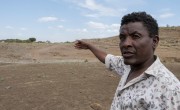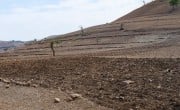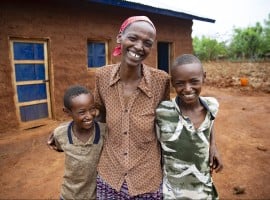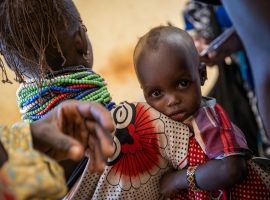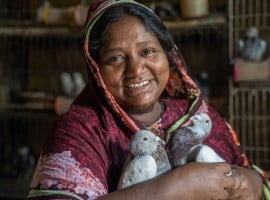
Read our 2024 annual report

Knowledge Hub
Disaster risk reduction, explained
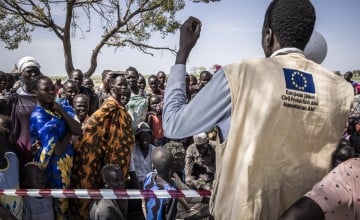
Disaster risk reduction limits the risks faced by those who stand to lose the most from any kind of emergency. Here’s what you need to know.
“One of the most pressing challenges of our time [is] the extraordinary increase in the number and extent of natural disasters.”
Kofi Annan, then the Secretary-General of the United Nations, wrote that in 1999. In the 25 years that have followed, this challenge has only become more pressing. A 2018 UN report placed economic losses due to natural disasters at more than double the cost of losses in the previous two decades. In the last 10 years alone, extreme weather events have cost the global economy over $2 trillion (USD), and the World Economic Forum estimates that, by 2050, the global cost of climate events will be between $1.7 trillion and $3.1 trillion per year.
People with the fewest resources and safety nets are hit hardest by these disasters. The UN has reported that people in low- and middle-income countries are seven times more likely to die from natural disasters. Losing everything in a fire or a hurricane can lead families into a cycle of debt that follows them for generations. And while we can’t predict the unpredictable, we can prepare for it. In our world, we call that concept disaster risk reduction.
What is disaster risk reduction?
Disaster risk reduction (DRR) protects the lives and livelihoods of those who are most vulnerable to natural disasters or emergencies. Comprising a number of different approaches and strategies, DRR ultimately limits the negative impacts of these events on those who stand to lose the most. The goal is to prevent new risks, reduce existing risks, and increase overall resilience.
With the right disaster risk reduction strategy in place, we can reduce the size of a disaster, its strength, or even how frequently it occurs. In tandem with this, we can also make sure that those who are most exposed to these hazards are able to better anticipate, survive, and recover.

Why is DRR important?
Mami Mizutori, former head of the UN’s Office for Disaster Risk Reduction (UNDRR), sums it up best: “The world has been stuck in a vicious cycle of disaster → response → dependency → repeat.”
With natural disasters becoming more frequent and significant, more people are becoming trapped in this cycle without the resources or reserves to break it. However, an ounce of prevention can be worth a pound of cure. As UNDRR notes, every $1 (USD) invested in disaster risk reduction can save up to $15 in recovery costs. Every dollar spent to fortify infrastructure alone saves $4 in reconstruction.
DRR not only saves lives, it helps to improve them. These investments free up more funds for communities to use towards longer-term development and reduce their dependency on NGOs and humanitarian aid.
Every $1 invested in disaster risk reduction can save $15 in recovery costs.
How do we measure risk?
In the case of DRR, we look at risk as the combination of the following three elements:
- A person/community’s exposure to hazards
- The vulnerability and capacity of people to respond to those hazards
- The characteristics of each hazard
This allows us to calculate risk and also prioritise where to work, to ensure that the resources we have to do DRR projects are going where they’re needed most.
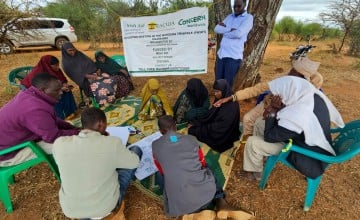
How does DRR work?
DRR is a science, and one that affects many areas of development and humanitarian aid. The work of DRR is also known as disaster risk management (DRM), and is based largely around the UN-set Sendai Framework. The framework sets seven objectives:
- Reduce disaster fatalities
- Reduce the number of people affected by disasters
- Reduce the direct economic loss of disasters
- Reduce disaster-caused damage to critical infrastructure and services
- Increase the number of countries with local and national DRR strategies
- Increase international cooperation with low-income countries
- Increase the availability of and access to early warning systems
There are many ways these objectives can play out in practice. Some common DRM approaches include adjusting and building infrastructure to reduce risk (like retaining walls, check dams, and embankments), natural resource management like reforestation, agricultural inventions like Climate Smart Agriculture, and early warning and action systems, which improve local response to disasters when (and even before) they happen.
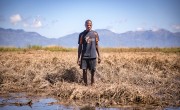
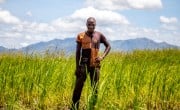
Disaster risk reduction and management at Concern
DRR cuts through a lot of other areas of Concern’s work, from emergency response and food security to healthcare and education.
Bangladesh
In Bangladesh, which faces annual risk for floods during monsoon season, there are some DRM components of many of our projects. One recent initiative was the Z Zurich Foundation-funded Flood Resilience Programme, which worked with communities in Gaibandha and Lalmonirhat districts to strengthen local systems in a way that allowed communities to pursue economic development while managing flood risk over time in a mutually-reinforcing way.
The project invested roughly $250,000 USD in district annual budgets for community resilience, creating contingency funds for flood preparedness plans. These budgets also provided for raising household plinths and local latrines so they’re above sea level, installing flood-resilient tube wells, repairing roads, and renovating drainage systems. There were also cross-cutting initiatives including vaccinating livestock for local farmers (preventing the spread of waterborne diseases) and education plans that kept 10,000 students in 27 schools despite flood risks. The programme reached over 62,000 people last year.
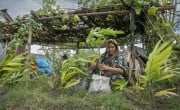
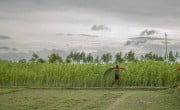

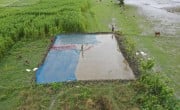
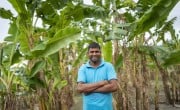
Chad
Concern has led multiple DRR projects in Chad in recent years, responding to a host of challenges including regional conflict and drought. One area we’ve focused on recently are Early Warning Systems (EWS), a DRM standard designed to equip communities with the tools and knowledge to identify, anticipate, and respond to risks before they escalate. This has been especially true of our larger DRR project, the Programme for the Economic and Social Resilience of Eastern Chad’s Populations to Conflict and Climate Change (RESPECCT), a multiyear initiative funded by the European Union and French Development Agency.
With 54,000 enrolled participants, the programme (which continues through 2028) supports economic development across 75 villages through income-generating activities, improving community infrastructure, and providing professional training. A focus on early warning meant we linked community action committees with government technical services, creating an easier and more effective method for managing flood-related emergencies. Working at the nexus of natural disasters, conflict, and development, the program is also able to respond nimbly to unexpected needs, particularly in areas of Chad hosting large numbers of Sudanese refugees.
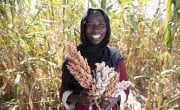
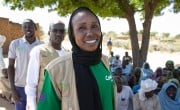
Ethiopia
Another example of how DRR works well as a component of larger projects can be found in our ReGRADE II project in Ethiopia. An acronym based on “Resilience, Graduation, and Evidence,” ReGRADE II builds on the success of our initial project, which incorporated climate resilience, natural resource management, and the Graduation approach to help families in Ethiopia who rely on the land for their livelihoods to improve their financial security. Over 18,000 participants were part of the project last year.
In addition to natural resource management, other key DRR activities include early warning systems and cash grants for participants to build eco-friendly income-generating activities. As part of ReGRADE II and our larger work in the country, we’ve planted nearly 526,000 trees in the areas where we work. ReGRADE II also introduced to its communities water catchment systems that allow farmers to mitigate water stress and scarcity by harvesting rainwater runoff during the rainy season that can be used in the dry season.
